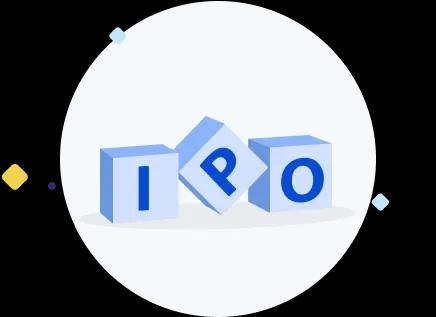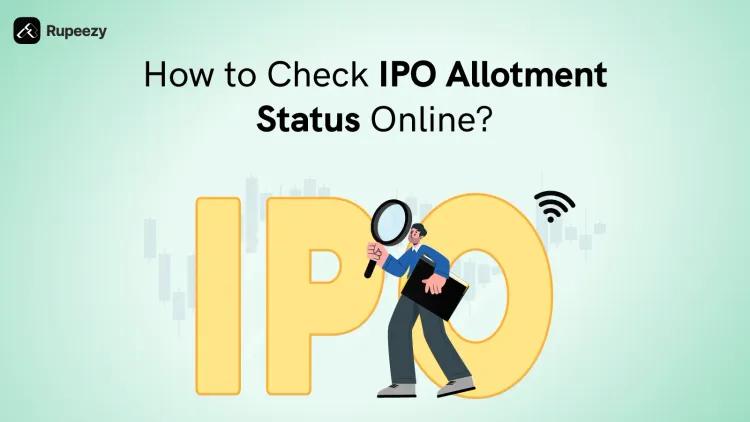IPO Listing Time in the Stock Market


00:00 / 00:00
The IPO listing time on listing day lasts for 60 minutes from 9:00 AM to 10:00 AM. The first session from 9:00 AM to 9:45 AM is the pre-open trading session, from 9:45 AM to 9:55 AM is the price discovery period, from 9:55 AM to 10:00 AM is the buffer period, and after 10:00 AM, normal trading begins:
Session | Listing Time of IPO | Description |
Pre-open Trading Session | 9:00 AM - 9:45 AM | It is when the orders for the IPO are placed. You can modify or even cancel the same. |
Price Discovery (Order Matching) | 9:45 AM - 9:55 AM | Here, the market determines the opening price for the IPO. |
Buffer Period | 9:55 AM - 10:00 AM | This is nothing but a safe transition time to switch to regular trading. |
Normal Trading Begins | 10:00 AM onwards | IPO shares start trading in the regular market. |
When Does an IPO Get Listed?
As per SEBI’s T+3 rule, IPO shares are listed within 3 working days after closing. For example, if an IPO closes on Monday, it will list by Thursday. From this day forward, the IPO shares trade like any other stock on the exchange.
Now that you know the IPO listing time and day, let’s check out why it matters to investors and understand the listing process.
Why the Listing Time of IPO Matters to Investors
The IPO listing time is crucial for investors because it marks the exact moment when newly issued shares become available for trading on the stock exchange. Here’s why this timing is so important:
1. First Opportunity to Trade
IPO listing time marks when shares become available on the exchange. Until then, investors cannot buy or sell their allotted shares. This moment is crucial for those wanting to enter or exit positions immediately, especially if they anticipate quick gains or want to avoid early losses.
2. Accurate Price Discovery
The listing time initiates the price discovery process, where market demand and supply determine the IPO’s opening price. This price reflects real investor sentiment and valuation, often differing from the issue price, providing insights into how the market values the company.
3. High Volatility and Profit Potential
The initial trading hours after listing often experience significant price swings due to speculation and demand-supply imbalances. For active traders, this volatility creates opportunities to book quick profits, but it also carries higher risk, making timing critical.
4. Liquidity Unlock for Investors
Before listing, IPO shares are locked in investors’ demat accounts and cannot be traded. Listing time unlocks liquidity, enabling investors to sell their stocks if they choose, providing flexibility and control over their investments.
5. Market Sentiment Indicator
The way an IPO performs at listing reveals market confidence in the company’s future. A strong listing price and positive momentum suggest optimism, while a weak start may indicate concerns, influencing investor decisions and stock performance.
6. Strategic Trading Window
Professional traders and institutional investors closely monitor IPO listing times to implement intraday strategies like scalping or short-term trading. Understanding the timing helps them capitalize on price movements and manage risks effectively.
IPO Listing Process
When you apply for upcoming IPOs, you're taking the first step in the journey. What follows is a structured process that leads to the listing day. So, here we explain the step-by-step IPO listing process:
Step 1: Company Decides to Go Public
The process starts when a company chooses to raise funds by offering shares to the public. Investment bankers or merchant bankers are brought in to manage the IPO.
Step 2: Drafting and Filing the DRHP
A Draft Red Herring Prospectus is prepared. It includes the company’s financials, risks, and intended use of funds. This is submitted to SEBI for review.
Step 3: Regulatory Review by SEBI
SEBI examines the DRHP for transparency and accuracy. After suggested changes (if any), the company receives approval to proceed.
Step 4: Choosing the Exchange
The company selects one or more stock exchanges, usually NSE and BSE, or any one to list its shares and reach a wider base of investors.
Step 5: Marketing the IPO
Roadshows and investor presentations are organized to attract interest. These efforts help build demand among institutional and retail investors.
Step 6: Price Band and Bidding Process
A price range is announced. Investors bid within this band during the subscription period, which generally lasts for 3 working days.
Step 7: Finalizing Allotment and Processing Refunds
After the bidding ends, shares are allotted based on demand and SEBI guidelines. Refunds are issued to those who didn’t receive shares.
Step 8: Crediting Shares to Demat Accounts
Successful applicants receive their shares directly in their demat accounts, usually one day before listing.
Step 9: Pre-Listing Coordination
Exchanges run checks and conduct a pre-open session to determine the listing price. Systems are prepared for the first trade.
Step 10: IPO Listing Day
Shares begin trading on the stock exchange at 10:00 AM on the listing day. This marks the public debut of the company’s stock.
Step 11: Post-Listing Observations
Investors track how the stock performs in the market. Listing gains or losses depend on demand, company fundamentals, and overall sentiment.
Conclusion
The IPO listing time is not just an hour on the clock. It is an important time when trading in a newly listed stock starts. It is a crucial market moment that can impact the prices based on sentiments, emotions, and a lot more.
Understanding of this time is very important when you are waiting for your allotment. Also, this will allow you to start trading based on the market situation. You must keep track of the pre-open session, know the exact time your stock will trade, and stay alert during those first few volatile hours.
For the best trades, here is an important point to remember. In IPOs, time is not just a factor, but is an overall impactful factor that would lead to success.
FAQs
Q1. How are listing price and issue price different?
The issue price is the offer price at the time of the IPO. The listing price is the price at which the stock starts trading on the exchange platform. It’s decided during the pre-open market session based on investor demand and market conditions.
Q2. Can I sell IPO shares on the listing day?
Yes, if you received an allotment and the shares are credited to your demat account, you can sell them as soon as the stock gets listed, starting at 10:00 AM on the listing day.
Q3. At what time IPO is listed on the NSE and BSE?
On both NSE and BSE, IPO shares begin trading at 10:00 AM. A pre-open session starts at 9:00 AM for price discovery, but regular trading starts from 10:00 AM onward.
Q4. Are all IPO listing times are same time?
Yes, the listing time of IPO is the same for all, be it a mainboard IPO, SME IPO, or any IPO listed on NSE or BSE.
Q5. Can the listing price be lower than the issue price?
Yes, if market sentiment is weak or demand is low, the stock can list below the issue price. This is known as a discount listing. On the other hand, strong demand may lead to a premium listing.
Check Out These Related Articles |
The content on this blog is for educational purposes only and should not be considered investment advice. While we strive for accuracy, some information may contain errors or delays in updates.
Mentions of stocks or investment products are solely for informational purposes and do not constitute recommendations. Investors should conduct their own research before making any decisions.
Investing in financial markets are subject to market risks, and past performance does not guarantee future results. It is advisable to consult a qualified financial professional, review official documents, and verify information independently before making investment decisions.

All Category







